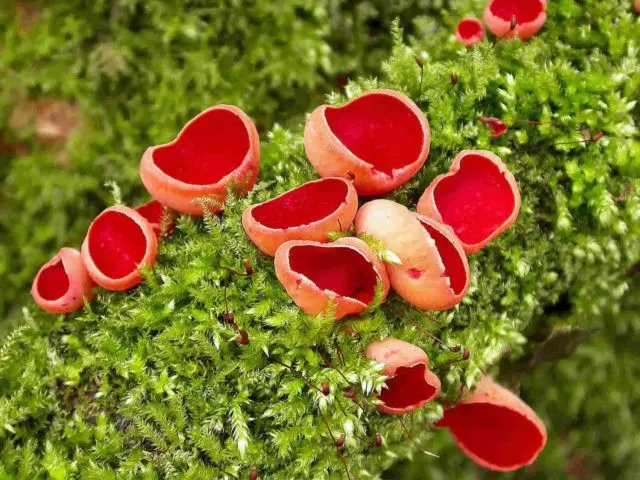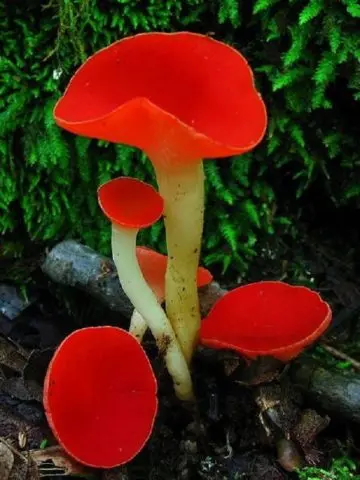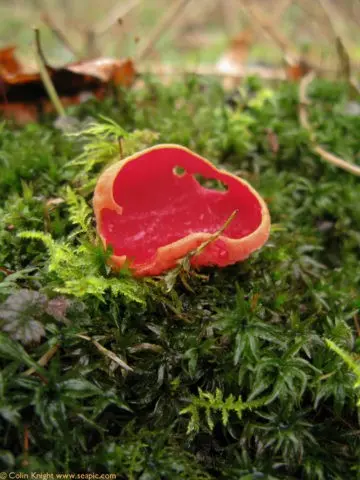Contents
Austrian sarcoscif is known by several names: Lachnea austriaca, Red elf bowl, Peziza austriaca. In Our Country, an exotic species of fungus is found in old clearings of mixed forests, the distribution is not massive. The marsupial fungus belongs to the Sarcosciphoid family, the main distribution area is Australia, Asia, Europe, and America.
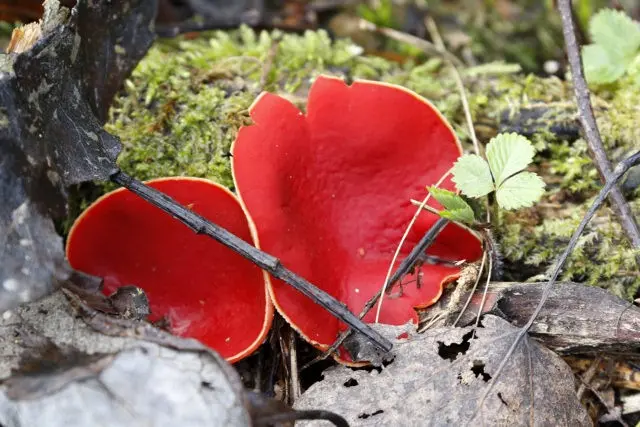
What does the Austrian Sarcoscyphaus look like?
Sarcoscif austria is bright red, but it is the only species that has albino forms. Some enzymes responsible for coloring may be absent. Fruiting bodies are white, yellow or orange. An interesting fact: mushrooms with signs of albinism and brightly colored mushrooms can develop in one place. Among mycologists, there is no consensus on the causes of color change.
Description of the fruiting body
At the initial stage of development, the fruiting body is formed in the form of a bowl with concave light edges. With age, the hat unfolds and acquires an irregular shape of a disk, a saucer.
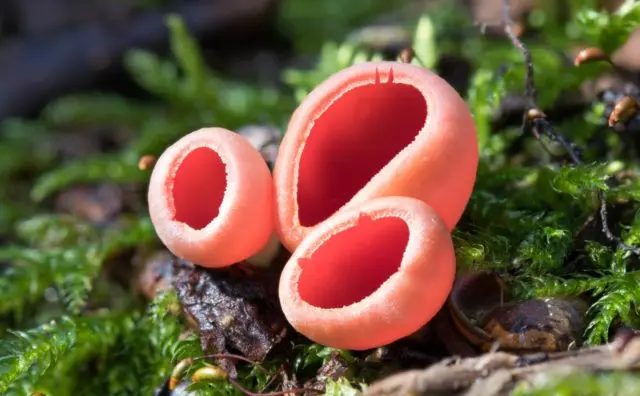
Characteristics of the Austrian sarcoscypha:
- the diameter of the fruiting body is 3-8 cm;
- the inside is bright crimson or scarlet, pale red in older specimens;
- in young representatives, the surface is smooth, even, in old ones it looks corrugated in the center;
- the lower part is light orange or white, with a small edging, the villi are light, transparent, spiral.
The pulp is thin, fragile, light beige, with a fruity smell and a slightly pronounced mushroom taste.
Description of the leg
In a young Austrian sarcoscypha, you can determine the leg if you remove the top layer of leafy litter. It is short, medium thickness, whole. The color matches the outer part of the fruiting body.
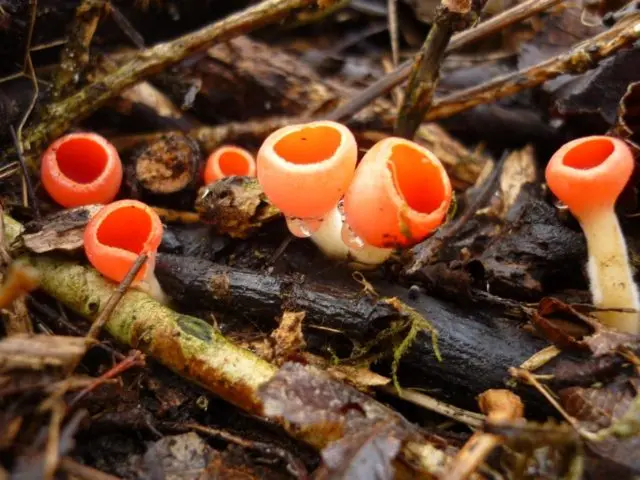
In adult specimens, it is poorly defined. If the saprophyte grows on bare wood, the stem is in a state of rudiment.
Where and how to grow
Sarcoscypha austria forms small groups on the rotting remains of trees. They can be found on stumps, branches or perennial deadwood. Sometimes the species settles on wood immersed in the ground and covered with a layer of rotten leaves. It seems that the Elf Cup is growing from the ground. Woody residues are the main place of growth, preference is given to maple, alder, willow. It settles less often on oaks, conifers are not suitable for vegetation. Rarely, a small accumulation can be seen on root rot or moss.
The first families of the Austrian sarcoscypha appear in early spring, immediately after the snow melts, on open clearings, on the sides of forest paths, less often in parks. Sarkoscif is a kind of indicator of the ecological state of the area. The species does not grow in a gassed or smoky area. The elf bowl is not found near industrial enterprises, highways, city dumps.
Austrian sarcoscypha can only grow in temperate climates. The first wave of fruiting takes place in the spring, the second – in late autumn (until December). Some specimens go under the snow. In Our Country, the Elf bowl is common in the European part, the main area is Karelia.
Is the mushroom edible or not?
Sarcoscif Austrian – a species without a pronounced taste and smell, which is classified as edible. The texture of a small mushroom is dense, but not rubbery. Young specimens are processed without preliminary boiling. It is better to heat-treat mature fruiting bodies before cooking, they will become softer. There are no toxic compounds in the chemical composition, so the Elf bowl is absolutely safe. Suitable for any processing method.
After freezing, the taste becomes more pronounced. Fruit bodies are used for pickling, include in assorted. Winter preparation with red mushrooms looks unusual, the taste of sarcoscif is not inferior to species with a higher nutritional value.
Twins and their difference
Outwardly, the following varieties are similar to the Austrian:
- Sarcoscif scarlet. You can distinguish by the shape of the villi on the outside of the fruiting body, they are smaller, without bends. Mushrooms do not differ in taste, both types are edible. The formation of fruit bodies in them is simultaneous: in spring and autumn. The double is thermophilic, therefore it is found in the southern regions.

- The western sarcoscypha belongs to the twins. In Our Country, the fungus does not grow, it is common in the Caribbean, in the central part of America, and is less common in Asia. The fruiting body has a smaller cap (no more than 2 cm in diameter), as well as a clearly defined long thin stem (3-4 cm). The mushroom is edible.

- Sarcoscyph Dudley’s saprophyte is outwardly difficult to distinguish from the Elf Cup. The fungus is found in Central America. The fruit body is bright crimson in color, formed in the form of a shallow bowl with uneven edges. More often grows singly on moss or leafy litter, covering the rotten remains of linden. Fruiting only in spring, in autumn the mushroom does not grow. Taste, smell and nutritional value does not differ from the Elf bowl.

Conclusion
Austrian Sarcoscif is a saprophytic fungus with an unusual structure and scarlet color. It grows in the temperate climate of the European part, bears fruit in early spring and late autumn. It has a slight smell and taste, is universal in processing, does not contain toxins.










